Healthy Gums
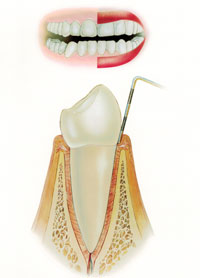
Gingivitis
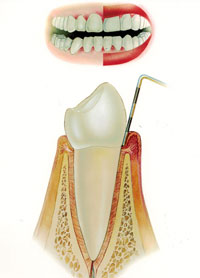
Early Peridontitis
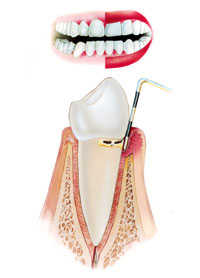
Moderate Peridontitis
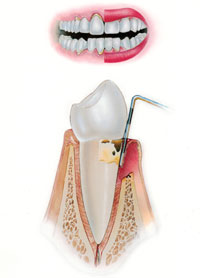
Advanced Periodontitis
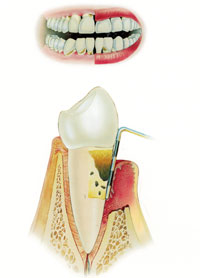
What is Gum Disease?
It is the inflammation and infection of the gums around the neck of the teeth
Early stage gum disease or Gingivitis:
Bacteria containing plaque accumulates around the necks of the teeth.
If this plaque is not removed by daily brushing and flossing, this will cause inflammation in the gums.
Signs and Symptoms:
- Puffy, red and swollen gums
- Bad taste in the mouth
- Bleeding on brushing - red tooth brush
- Gum sensitivity when flossing and brushing
Gingivitis is a reversible disease and can usually be treated successfully by removing the plaque and calculus and adopting a good oral hygiene routine at home.
Treatment of gingivitis:
- Visiting your dental hygienist regularly for preventative maintenance treatments
- During your appointment the removal of plaque, calculus, and staining will be carried out using various dental instruments.
- Improving your home care- how to look after your teeth will be discussed and home care plan developed to suit your needs and lifestyle.
Regular brushing and flossing (cleaning in between the teeth) are your most effective tools in fight against gum disease
Late stage gum disease or periodontitis:
It is an advanced stage of gum disease.
Signs and symptoms:
- Gums that have shrunk away from the teeth
- Persistent bad breath
- Discharge from gum pockets
- Loose teeth
- Gaps appearing between your teeth
The gum infection which usually starts at the surface progresses and pockets form between the gum and the teeth .The bone that supports the teeth is destroyed and the teeth can become loose. This bone forms the foundation of the teeth. The gum disease is left untreated can lead to ultimate loss of the teeth. The gums can also recede and expose the root surface of the teeth causing sensitivity.
Unfortunately periodontitis is not reversible and bone will not grow back.
However with effective gum treatment and maintenance further bone loss can be stopped.
Factors such as smoking, poor oral hygiene, diabetes, and autoimmune diseases can contribute to acquiring gum disease.
Treatment of periodontitis:
- A thorough periodontal examination and analysis will be undertaken and a specific treatment plan developed to suit your personal needs.
- Specialised scalers are used to remove plaque and calculus from gum pockets. Medications may also be placed within these pockets.
- Local anaesthetics may be required and treatment may require multiple visits.
- Referral to specialist periodontist may be required
Meet our hygienists on our Team page.
Good oral hygiene regime is vital to control gum disease
Side effects of gum treatment:
- Pain during treatment- local anaesthetic may be required
- Gum will be tender for a while after treatment and this should settle down in few weeks
- Tooth sensitivity: immediate or delayed this is caused by gum shrinkage after treatment
- Gum shrinkage if the gum tissues were originally swollen
- Increased risk of tooth decay around exposed root surfaces
Preventing gum disease:
- Good oral hygiene regime at home
- Good general health and reducing the risk of diabetes
- Good eating habits and strong immune system
- Smoking cessation
- Regular dental examination and hygiene visits
